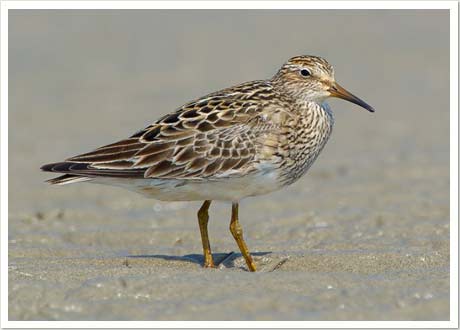|
| Pectoral Sandpiper |
PHOTO: 1 |
 |
|
 |
 |
| Pectoral Sandpipers generally avoid sandy beaches for grassy plains and freshwater flats. Nonetheless, in mid-summer, close observers on Plymouth Beach may find one or two of these "grass-pipers" among large flocks of other roosting sandpipers. Resembling giant Least Sandpipers, the Pectorals that we see are migrants en route from Northwest Canada to South America, using the tidal flats and open beach to rest and rebuild diminished fat stores. |
|
|